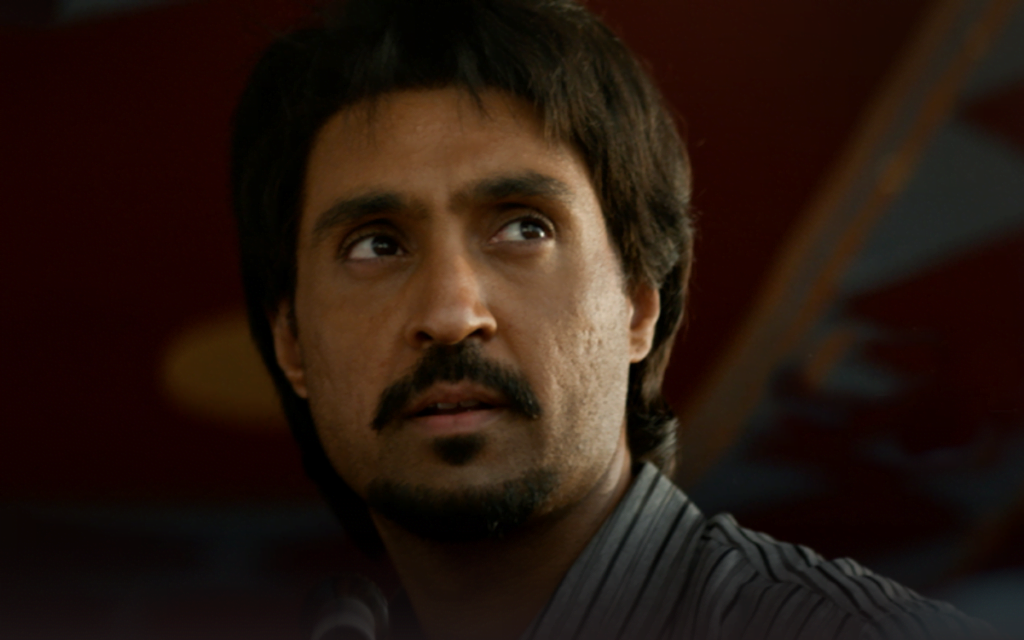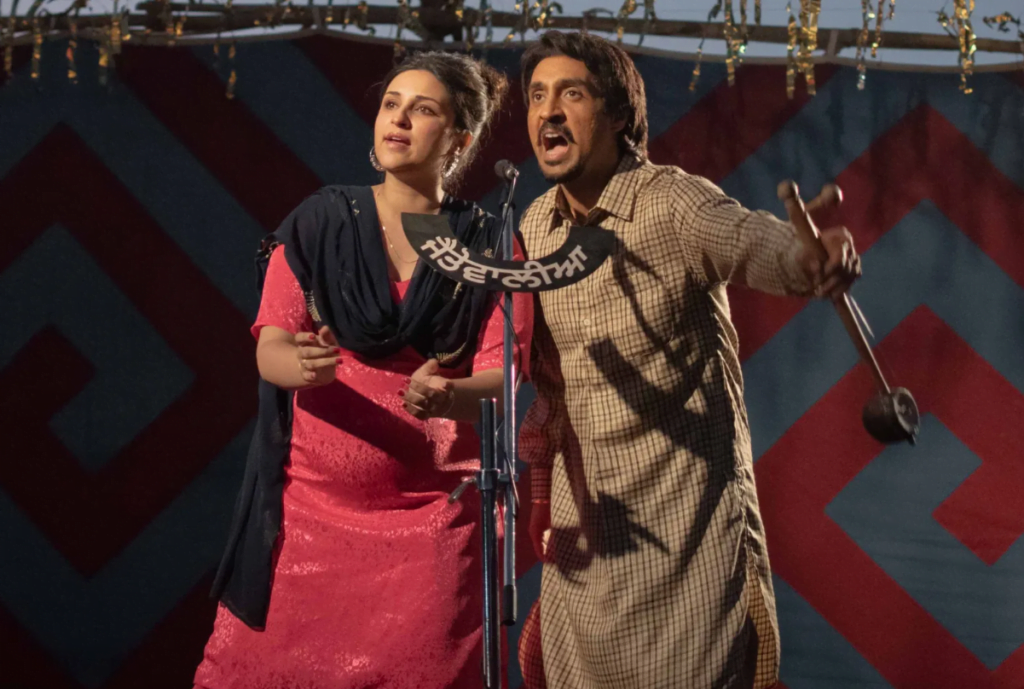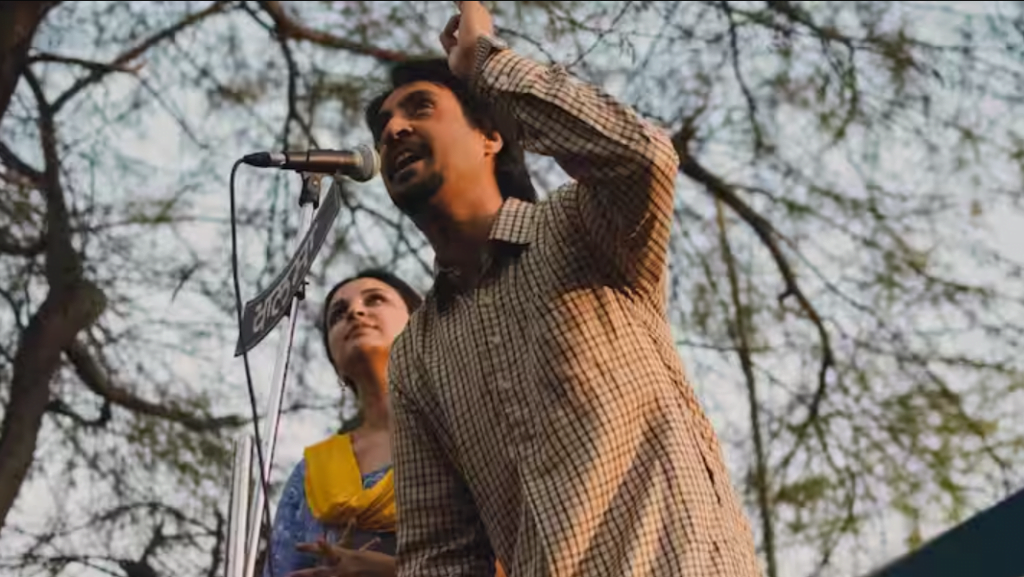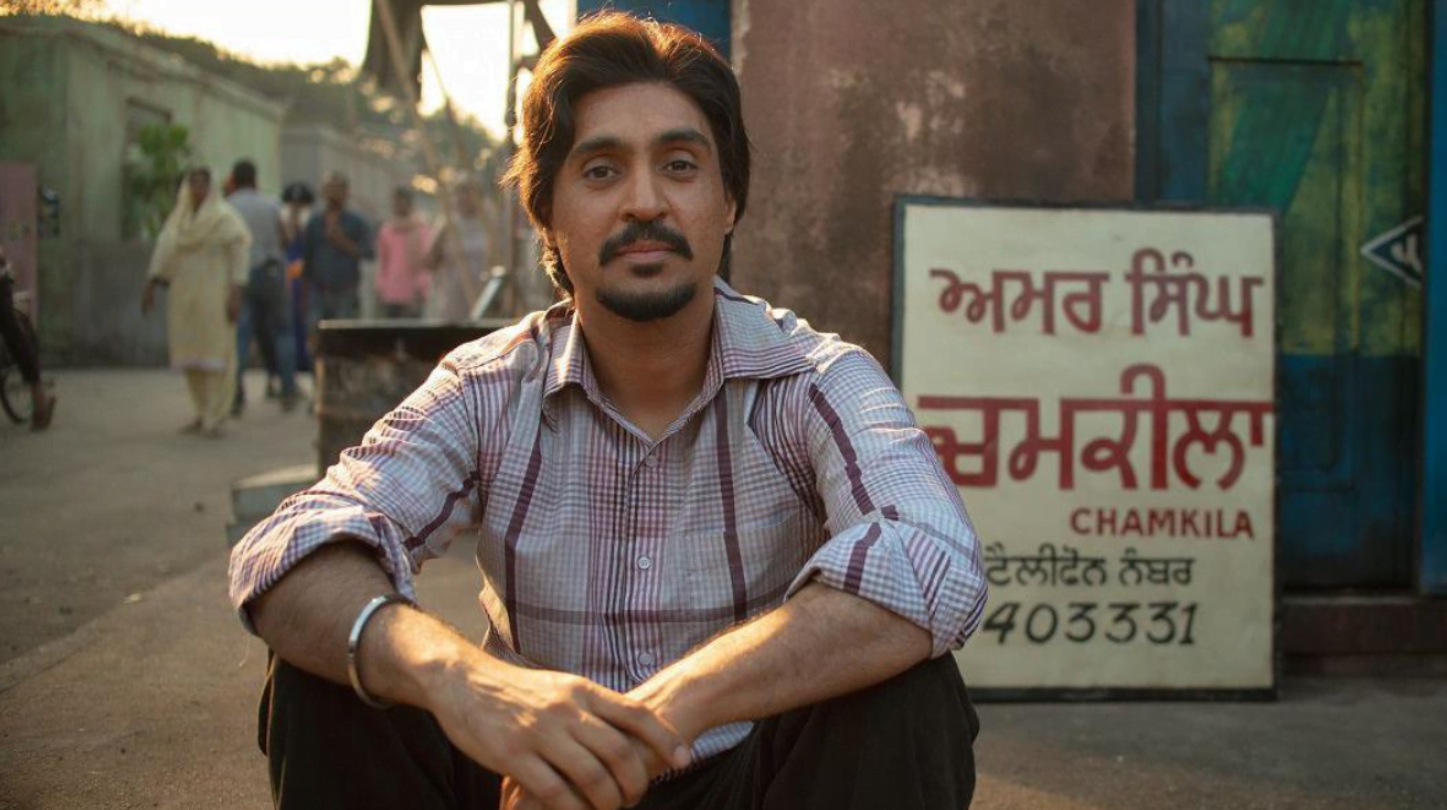Towards the beginning of the second half of Imtiaz Ali’s Amar Singh Chamkila, groups of women of all ages abandon the burden of shame socially imposed on them and accept the fact that it isn’t absurd that the lyrics of Chamkila’s songs are “dirty,” “vulgar,” or lewd. It isn’t absurd, because as the old woman knitting on the charpoy tells them: all men think about it all the time, darling. They don’t say it loud and he does. She admits to ‘discreetly‘ listening to his songs, just as another woman pipes in: the songs we sing at weddings. Discreetly. They are no different.
Therein lies the politics of Chamkila. Towards the end of the film when religious leaders ask Chamkila to stop singing his obscene songs, they tell him: you may flee wherever you like, you will find us. That is, the ‘us‘ of the ubiquitous social is to be found everywhere. But the social does not comprise only religious leaders who seek to ban his music; the social also consists of the ‘ordinary’ men Chamkila’s music caters. He says that his songs sell because most of the people in the world are ordinary, like me.
The subversiveness of Chamkila doesn’t lie in the fact that he composed such music. The songs he penned and sang were usually from a man’s point of view. What is subversive about Chamkila (played brilliantly by Diljit Dosanjh) and Amarjot Kaur (played by Parineeti Chopra), however, is that it isn’t just the man singing them, or only men attending his concerts.
Amarjot sings next to him through all their performances, and women stand around to listen to them just as much as men do. They may not be in the centre of the akhara, but they stood and danced on roofs in such large numbers, that often the roofs would cave in. It wasn’t for no reason that Chamkila was given the moniker Kotha Dhau Kalakaar or the Roof Breaker.
As Prem Chowdhry (2001) writes, “One of the more popular images of women in rural folk culture is that of the lustful woman, whose sexuality is dangerous.” A lot of it is confined to secrecy, but it continues to be a powerful image.
As the old women in the aforementioned scene talk about singing songs discreetly at weddings, different groups of women are shown enjoying Chamkila’s music with A. R. Rahman’s Naram Kaalja (Tender Heart), brilliantly penned by Irshad Kamil, playing in the background. The women sing: you plunder my body thinking I am weak, and you’re macho. But really, you’re a means of pleasure to me.
Chamkila, the Icon
Ali’s Chamkila opens with a ballad-like song telling the audience about the legend of Chamkila. It outlines not only the fact that Chamkila sang conventionally unsophisticated songs, but also that despite it, everyone enjoyed his music, whether they admitted it or not. He was also seen as a messiah. He belonged to a Dalit Sikh community whose members were largely landless and worked for the upper-caste landowners of the village. The subversiveness of this music thus went even further; he continued to sing despite opposition from religious and caste leaders, and it was the income from the records that sustained a lot of the community members in his village.

Very few people do biopics of musicians the way Ali does it. With Rockstar he brought a fictional rockstar to life, almost in preparation for Chamkila, whose life Ali portrays with nuance. The film flits between the past and the present, with most of the story narrated by Chamkila’s troupe members to policemen sitting outside the room where Chamkila’s father talks to his and Amarjot’s dead bodies.
Writers Imtiaz and Sajid Ali don’t just tell us the facts of Chamkila’s life. They consolidate all the information on Chamkila and Amarjot’s life, laying it out for us, alongside the diverse opinions that continue to be attached to his life and work.
The film ends, too, with a montage of shots of the various groups of people his songs affected, and the various opinions he raked up. Chamkila was the highest-selling artist in Punjab during his time. Not unlike Sidhu Moosewala, who was ranked one of the most popular Punjabi singers in 2021, and was assassinated in 2022, at 28. Chamkila was assassinated at 27.
Amarjot Kaur
Despite having been so popular as to have been assassinated, there wasn’t a lot of information available about either Chamkila or Amarjot. Previously, Kabir Singh Chowdhry directed a mockumentary on his life in 2018, called Mehsampur, and Diljit Dosanjh co-starred in Jodi in 2023, a Punjabi-language film directed by Amberdeep Singh. Amarjot, who was also his wife, does not yet have a Wikipedia page to her name, and there is scant information available about her, apart from a few articles now trying to shed some light on who she was, but as a pivotal part of the duo, Amarjot is hard to locate in the annals of history.

Yet Amarjot’s character, portrayed beautifully by Chopra, is one filled with subversion. She loved reading, and would never be seen without a book. She came across as quiet and reticent, but wasn’t hesitant about singing Chamkila’s songs – she blushed coyly the first time he asked her which song was her favourite – even when she was pregnant. The image of a pregnant Kaur singing songs of desire is one of the other powerful images of the film. They were so popular that an urban myth went that they did 366 shows in 365 days.
Chamkila, the Artist
Ali’s imagination of the icon of Chamkila is never at the expense of the artist he was. Chamkila enjoyed doing what he did. It may have been an accident that he was called Chamkila, but it wasn’t an accident that he was a superstar who shone not only in his corner of the world but internationally too.

Interspersed through the storyline is Chamkila’s passion for music. He rehearsed his music after work at the factory and didn’t take his talent for granted. He worked hard to create a space for himself in the musical scene without growing into a defiant star. Some of it may be because as one of the characters and Chamkila’s friend describes it: despite his success, he remained servile, signalling towards his lower-caste status. But he was defiant, only not in a way similar to the entitlement of the historically privileged. He was happy to be recognised as a singer, responding to death threats with: their job is to shoot, they will shoot. Our job is to sing, so we will sing.
Ali’s direction of Chamkila places Punjab’s political and social landscape squarely at its centre. His context-setting shots often break into animations that not only make the film compact – even at 146 minutes, the film does not seem long – but also beautiful.
During the turbulence of the 80’s, specifically the riots of 1984, his popularity reached new heights, because as one of the characters explained: in crisis, people crave entertainment, they want to escape the tragic for a few moments. He was a disciplined artist, never over-confident. He rarely retorted to insults to his music, the only time being when religious leaders intercepted one of his performances in Canada. As they warned him in the green room about the consequences his actions might have, he grew impatient and asked them to hurry up with the warning. He didn’t like being pushed to the corner, especially when he could see that people enjoyed his music. He asked them: who decides what people should listen to?
Ali also writes Chamkila as a perceptive, worldly-wise artist. He knew his fame was momentary, and he knew he had to make the most of the time that he called apna time. He knew that he wasn’t indispensable, and had no misconceptions about his fame.
At the height of his career, when he was once told that he was going to perform at the same place where Amitabh Bachchan had performed, it saddened him: as if his childhood came to an end. A little note about the brilliant performance by Dosanjh, who makes the character of Chamkila his very own.
Chamkila, despite being set in 80’s India, can ironically also be seen as a portrait of the times we live in today. Touted as Punjab’s Elvis, Chamkila is, however, a considerably lesser-known musician. Ali’s film acts as a commentary not only to celebrate the star of Chamkila but also comes at a poignant time in what will soon be history. It sheds light on a cultural phenomenon, while also addressing larger questions: who decides what one should listen to? Who are the makers of social and ideological apparatuses? Which desires are legitimate? Is a person reducible to their social identity?
About the author(s)
Himalika is slowly beginning to get the hang of being an adult, despite being a bad cook. She will take most things with a sense of humour and is constantly striving to infuse feminist practices in her research.




